My Lab Unlocked: Dr Parvez Alam FRSB
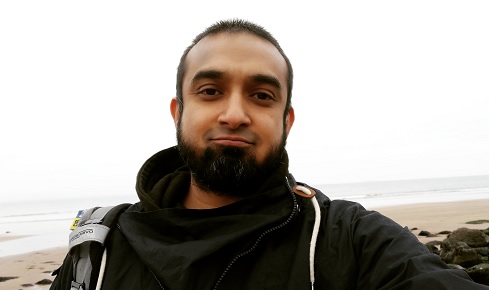
Dr Parvez Alam FRSB and his team work within the Materials Modelling and Design Lab at The University of Edinburgh, researching biological organisms from an engineering perspective
21st May 2021
My group works in biomimetic design. We combine a wide variety of activities spanning from bioprospecting fieldwork trips, to lab-based research on biological organisms, and from modelling and design to manufacture and testing. One of the primary focus areas in my group involves unique biological structures and species, researched from a perspective of materials science and mechanics.
We have a great interest in the structure-properties relationship of different biological materials. Our work is typically conducted at every length scale, since biological materials often exhibit differing levels of structural hierarchy, each contributing in their own way to the final properties of the material. Our research on materials from biological organisms is essentially aimed towards inspiring the design and development of multifaceted engineering materials of the future.
We also have a strong and active interest in the mobility, biomechanics and kinematics of organisms, and our research in this area inspires our work on the design of biomimetic machines and robots.
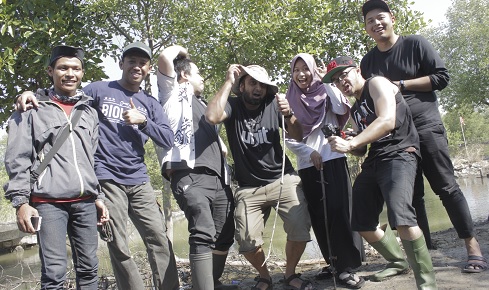 Dr Parvez and some of his team conducting fieldwork. From Left-to-Right - Andi, Saiful, Adhityo, Parvez, Puspa, Dwiki and Immanuel
Dr Parvez and some of his team conducting fieldwork. From Left-to-Right - Andi, Saiful, Adhityo, Parvez, Puspa, Dwiki and ImmanuelRepeating what biology does in an engineering context is not trivial. Biological structures and biological manufacturing techniques are extremely complex. We recognise that the way in which organisms organise, sense, respond and adapt is something that we need to apply to engineering, but these mechanisms are hard to mimic.
A simple example is the manufacture of spider silk. It is a high energy absorbing natural material that exhibits these properties by aligning certain repeating patterns of amino acids in a way that effectively resists intermolecular shear. Silk originates as a liquid dope in the glands of the spider, and this is drawn through complex spider-machinery known as spinnerets. None of this is simple. There is an art to thread-making that the spider understands, and that we would like to copy. I mention the spider since this is an oft-discussed topic, but it is only one of many organisms in biology that are of interest to us.
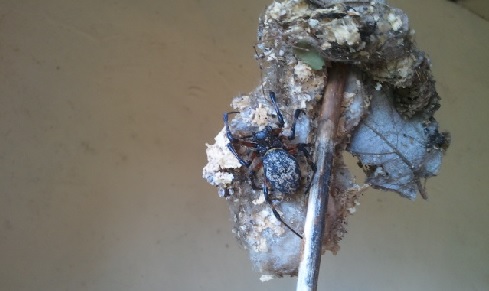 N.cruentata protecting its egg case and spiderlings
N.cruentata protecting its egg case and spiderlings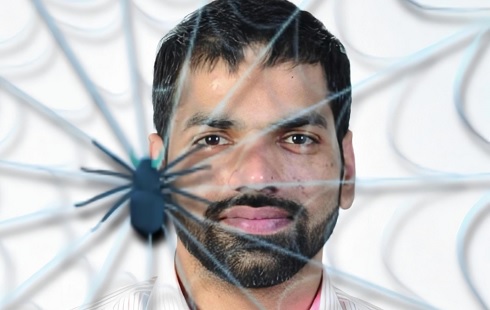 Lab member Ateeq studies spider and moth silk egg cases and cocoons to design novel materials
Lab member Ateeq studies spider and moth silk egg cases and cocoons to design novel materialsWe’re always interested in collaborating with zoologists, marine biologists and entomologists. They know the animals and can get us to where we want to go! We already have strong collaborations with the marine biology and entomology groups at Universtas Gadjah Mada in Indonesia, at the University of Cape Town in South Africa, and with random animal biology groups scattered around different parts of the world, but we’re always interested in and happy to collaborate with more of them.
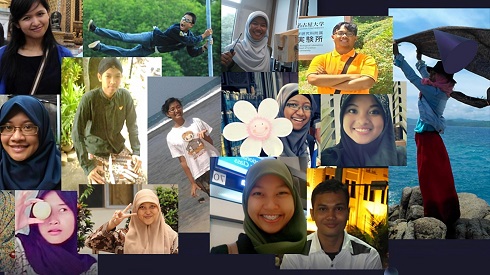 A collection of Dr Alam's team in Indonesia (pre-pandemic)
A collection of Dr Alam's team in Indonesia (pre-pandemic)Ultimately, it’s a lot of fun working at the interface between biology and engineering like this and we all end up needing to learn the “languages of different subjects” through these collaborations. So it’s a win-win for intellectual, cross-disciplinary development.
Due to COVID, travelling has been a massive problem. We’ve been focussing more on modelling over this COVID period, while we wait for the old-normal to return. My PhD student Gabrielis for example, has been simulating impact on a variety of crab shells to determine how geometry affects damage tolerance, and since some of our labs at Edinburgh have been partially open for research students, we have used these to the best of our potential. Chidume, who is running the final stretch of his PhD, has also been looking into crab shell structures. His work has focussed on fabricating crab-shell inspired damage tolerant materials that ‘might’ one day end up protecting planes and helicopters from potentially calamitous real-world problems such as bird strike.
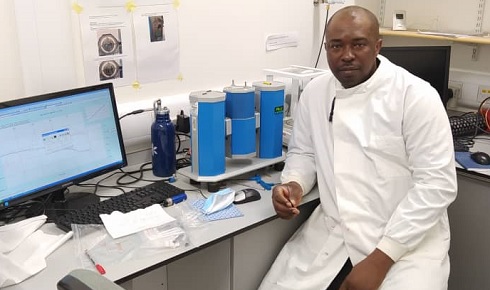 Lab member Chidume works on researching and mimicking crab architectures
Lab member Chidume works on researching and mimicking crab architectures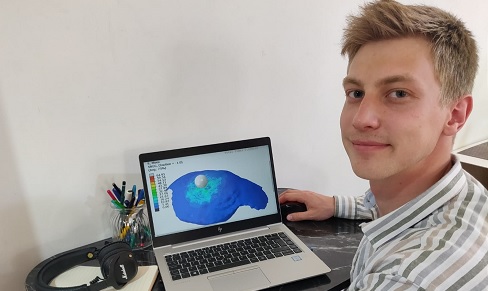 Lab member Gabrielis works on crab shell impact simulations
Lab member Gabrielis works on crab shell impact simulations


